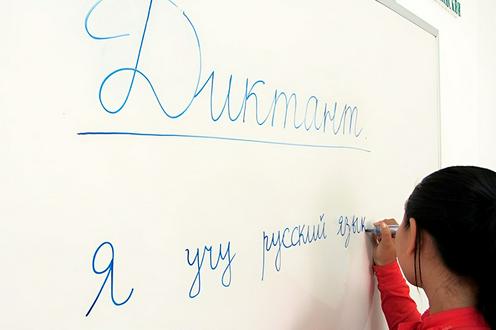Children of Kyrgyz migrants preparing to enroll in Russian schools could take their mandatory Russian language proficiency tests at universities in Kyrgyzstan. The proposal was made by Kyrgyz Deputy Foreign Minister Almaz Imangaziyev during a meeting with Russian Ambassador Sergey Vakunov.
The two officials discussed the pre-departure preparation of labor migrants, including biometric data collection, fingerprinting, and medical examinations, all of which Kyrgyzstan is seeking to conduct domestically before migrants travel to Russia. Among the topics raised was the possibility of administering language exams in Kyrgyzstan itself — a measure the Kyrgyz side believes would simplify the enrollment process for migrant children entering Russian schools.
The meeting also addressed the regularization of the migration status of Kyrgyz nationals listed in Russia’s registry of monitored individuals, and ways to expand the infrastructure of Russia’s migration centers to reduce long queues. The Kyrgyz Ministry of Foreign Affairs emphasized the need for stronger communication between Kyrgyz consular representatives and Russia’s migration authorities.
Both parties affirmed their commitment to continued coordination aimed at easing the procedures governing the stay of Kyrgyz citizens in Russia, and to improving administrative and educational processes in the interest of both countries.
Since April 1, 2025, a Russian law has required foreign children enrolling in Russian schools to pass a Russian language test. The exam is tailored to the child’s age and grade level: first graders undergo an oral assessment, while older students are tested through both oral and written assignments.
In May, Rosobrnadzor released initial statistics: of the 1,762 applicants, only 335 were cleared to take the test, with 81% eliminated during the document verification stage. The most common issues included incomplete paperwork, lack of available school places, and the submission of false information. Of those allowed to proceed, 44 had taken the test by the time of publication, with a pass rate of 61%.










